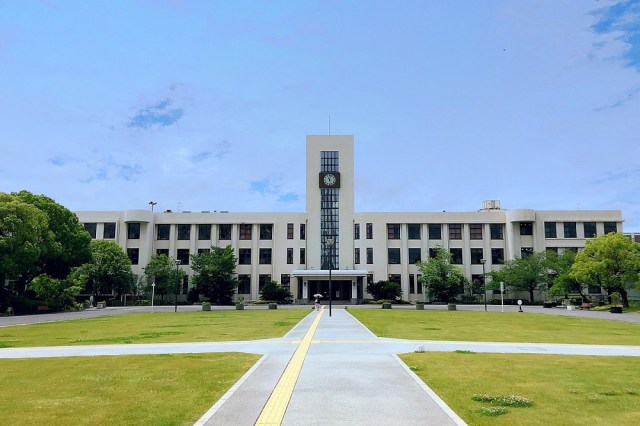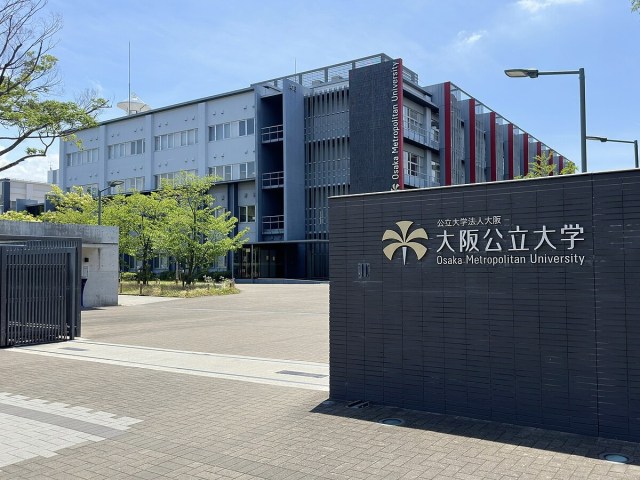
Says Japan will “continue to decline” without greater globalization.
Odds are that you assume, and correctly so, that Japanese universities generally conduct their lessons and other school business in Japanese. You may or may not also know that the Japanese academic year begins in April and ends in March, but that’s also the norm.
However, at least one of those aspects is going to be changing at Osaka Metropolitan University, and possibly the other one too.
The public university, which was established two years ago through a merger of Osaka City University and Osaka Prefecture University, has announced that it will be restructuring its academic year to begin in the fall and run until the following summer. This would align Osaka Metropolitan University’s schedule with academic institutions in the U.S., U.K., and Canada, as well as Vietnam and China, the two currently largest sources of working foreign residents in Japan. That alignment is no coincidence, as the expressly stated goal of shifting to a fall-to-summer academic year is to promote internationalization at Osaka Metropolitan University, allowing it to attract and coordinate with scholars from around the world in both domestic and overseas endeavors, particularly in making in easier for both OMU students to study overseas and for overseas students to study at OMU.
The shift will happen in stages, with the university’s undergraduate engineering department and certain graduate school programs making the transition in the fall of 2027. They’ll then be followed by other departments, with the plan being eventually for all students, regardless of whether or not they plan to participate in study abroad or other overseas educational activities, to begin their academic years in the fall.
Regarding the new policy, Hirofumi Yoshimura, the 48-year-old governor of Osaka Prefecture, said:
“I think there are national-level public universities that are also considering this change, but restrictions at the national level make it difficult to enact. It is also difficult for private universities to fully commit to this idea, but because Osaka Metropolitan University is administered by Osaka Prefecture, I would like for it to be a center of knowledge for Osaka. Moving forward, Osaka must become more international, and in the broader picture, so must Japan as a whole, and if they do not, they will continue to decline. They are actually in decline right now, as the world is growing.”
Shifting the academic year isn’t the only change that Yoshimura wants to see happen either. “In the future, the official language of the university should be switched to English,” he asserted, though no formal decision or timetable to do so appears to have been made at this point.
A greater connection to the global community, especially as Japan’s population declines, is in many ways a wise course to be taking. However, integrating Osaka Metropolitan University’s schedule to that of overseas societies comes with the risk of decoupling it from the rhythms of life for most of the rest of Japan. With students graduating from Japanese high schools in March, those entering OMU under the new schedule would have roughly a half-year with their studies on pause.
▼ “Oh no! Six months of no school? Whatever shall we do?”
Assuming that doesn’t cause a financial burden for their families, the students themselves might welcome a half-gap year, but there’s a potentially larger problem waiting for them when they graduate. In Japan, many workplaces, particularly larger and more prestigious companies and institutions, do a large portion of their hiring each year in a single batch, with new employees all starting at the same time in April, one month after graduation at universities, junior colleges, and trade schools. If OMU students are starting their academic year in the fall, though, they’ll ostensibly be graduating after this hiring season is over. That would mean students wanting to work at such organizations (which are the most plentiful source of jobs in Japan) would have to either convince employers to make special exceptions for them to start later in the year than other new hires, perhaps even re-running training programs just for them, or wait until the next spring before they start working, further delaying the start of their entry into adult society and achieving financial self-reliance.
▼ No school or job you have to go to becomes decidedly less fun once Mom and Dad stop paying for your fancy Frappuccinos.
Even for students on the fall-start schedule who are willing to wait until the next year’s hiring batch, there’s a potential interviewing issue. Japanese university students commonly interview for post-graduation jobs during their third year, once again with many companies holding orientation and interview sessions in clusters. Students who started in the fall instead of the spring would either be half a year behind in their studies compared to the applicants they’re competing with, putting them at a disadvantage, or they’d be half a year ahead, a competitive advantage, but with the added risk of being closer to their graduation date and having less time to weigh their options and search for the job that’s the best fit for them.
Both Osaka City and Osaka Prefecture are planning to organize investigative boards to discuss these potential pitfalls, but as of yet have not made any concrete comments regarding how they plan to address them.
Source: Kansai TV News via Yahoo! Japan News
Top image: Wikipedia/KishujiRapid
Insert images: Wikipedia/W7401898, Pakutaso (1, 2)
● Want to hear about SoraNews24’s latest articles as soon as they’re published? Follow us on Facebook and Twitter!




 The top 10 universities in Japan determined by 2021 World University Rankings
The top 10 universities in Japan determined by 2021 World University Rankings The number of doctorate students in Japan is now almost half of what it was 17 years ago
The number of doctorate students in Japan is now almost half of what it was 17 years ago Tokyo women’s university will accept transgender students who identify as female, a Japan first
Tokyo women’s university will accept transgender students who identify as female, a Japan first Tokyo Medical University accused of dropping women’s entrance exam scores 10-20 percent each year
Tokyo Medical University accused of dropping women’s entrance exam scores 10-20 percent each year Kyoto families angered by new policy forcing high school students to buy tablets at own expense
Kyoto families angered by new policy forcing high school students to buy tablets at own expense Japan’s new difficult-to-drink-from beer glass protects your liver, but it’s a brutal experience
Japan’s new difficult-to-drink-from beer glass protects your liver, but it’s a brutal experience How to order snacks on a Shinkansen bullet train in Japan
How to order snacks on a Shinkansen bullet train in Japan Demon Slayer: Kimetsu no Yaiba gets new roller coaster attractions and food at Universal Studios Japan
Demon Slayer: Kimetsu no Yaiba gets new roller coaster attractions and food at Universal Studios Japan New Pokémon ice cream, dessert drinks, and cool merch coming to Baskin-Robbins Japan【Pics】
New Pokémon ice cream, dessert drinks, and cool merch coming to Baskin-Robbins Japan【Pics】 Burger King Japan suddenly adds Dr. Pepper and Dr. Pepper floats to its menu nationwide
Burger King Japan suddenly adds Dr. Pepper and Dr. Pepper floats to its menu nationwide Hello, cosmetics! Clinique teams up with Hello Kitty this summer for first-time collaboration
Hello, cosmetics! Clinique teams up with Hello Kitty this summer for first-time collaboration “The most Delicious Cup Noodle in history” – Japan’s French Cup Noodle wins our heart【Taste test】
“The most Delicious Cup Noodle in history” – Japan’s French Cup Noodle wins our heart【Taste test】 To combat declining birth rate, Japan to begin offering “Breeding Visas” to foreigners
To combat declining birth rate, Japan to begin offering “Breeding Visas” to foreigners Starbucks teams up with Japanese shochu brewery for a whole new coffee experience
Starbucks teams up with Japanese shochu brewery for a whole new coffee experience Studio Ghibli releases giant Totoro plushies in Japan
Studio Ghibli releases giant Totoro plushies in Japan Nintendo history you can feel – Super NES, N64, and GameCube controllers become capsule toys
Nintendo history you can feel – Super NES, N64, and GameCube controllers become capsule toys Starbucks releases a cute Frappuccino and Unicorn Cake…but not in Japan
Starbucks releases a cute Frappuccino and Unicorn Cake…but not in Japan Kyoto Tower mascot termination reveals dark side behind cute Japanese characters
Kyoto Tower mascot termination reveals dark side behind cute Japanese characters McDonald’s Japan’s Soft Twist Tower: A phantom ice cream only sold at select branches
McDonald’s Japan’s Soft Twist Tower: A phantom ice cream only sold at select branches Yabai Ramen: What makes this Japanese ramen so dangerous?
Yabai Ramen: What makes this Japanese ramen so dangerous? Finally! Nintendo Japan expands Switch 8-bit controller sales to everybody, Online member or not
Finally! Nintendo Japan expands Switch 8-bit controller sales to everybody, Online member or not Japanese government wants to build luxury resorts in all national parks for foreign tourists
Japanese government wants to build luxury resorts in all national parks for foreign tourists 10 things you should buy at 7-Eleven in Japan
10 things you should buy at 7-Eleven in Japan Studio Ghibli releases anime heroine cosplay dresses that are super comfy to wear
Studio Ghibli releases anime heroine cosplay dresses that are super comfy to wear Woman charged for driving suitcase without a license in Osaka
Woman charged for driving suitcase without a license in Osaka Studio Ghibli unveils My Neighbour Totoro miniature house model
Studio Ghibli unveils My Neighbour Totoro miniature house model Kyoto experiencing problems with foreign tourists not paying for bus fares, but not on purpose
Kyoto experiencing problems with foreign tourists not paying for bus fares, but not on purpose Fighting mild hunger with a Japanese soda that turns into jelly in the stomach【Taste test】
Fighting mild hunger with a Japanese soda that turns into jelly in the stomach【Taste test】 Studio Ghibli’s Howl’s Moving Castle tapestry unveiled in Japan for first time
Studio Ghibli’s Howl’s Moving Castle tapestry unveiled in Japan for first time McDonald’s new Happy Meals offer up cute and practical Sanrio lifestyle goods
McDonald’s new Happy Meals offer up cute and practical Sanrio lifestyle goods Sales of Japan’s most convenient train ticket/shopping payment cards suspended indefinitely
Sales of Japan’s most convenient train ticket/shopping payment cards suspended indefinitely Sold-out Studio Ghibli desktop humidifiers are back so Totoro can help you through the dry season
Sold-out Studio Ghibli desktop humidifiers are back so Totoro can help you through the dry season Japanese government to make first change to romanization spelling rules since the 1950s
Japanese government to make first change to romanization spelling rules since the 1950s Foreigner’s request for help in Tokyo makes us sad for the state of society
Foreigner’s request for help in Tokyo makes us sad for the state of society Ghibli founders Toshio Suzuki and Hayao Miyazaki contribute to Japanese whisky Totoro label design
Ghibli founders Toshio Suzuki and Hayao Miyazaki contribute to Japanese whisky Totoro label design Doraemon found buried at sea as scene from 1993 anime becomes real life【Photos】
Doraemon found buried at sea as scene from 1993 anime becomes real life【Photos】 Tokyo’s most famous Starbucks is closed
Tokyo’s most famous Starbucks is closed Princesses, fruits, and blacksmiths: Study reveals the 30 most unusual family names in Japan
Princesses, fruits, and blacksmiths: Study reveals the 30 most unusual family names in Japan Tokyo University of the Arts to offer graduate program in video game design next year
Tokyo University of the Arts to offer graduate program in video game design next year “Silence Straw” — Kyoto University raising money to fight noises caused by drinking straws
“Silence Straw” — Kyoto University raising money to fight noises caused by drinking straws Japanese Komeito party suggests 20,000 yen (US$189) grant for graduating high school students
Japanese Komeito party suggests 20,000 yen (US$189) grant for graduating high school students Tokyo makes high school free for all families, even the rich ones
Tokyo makes high school free for all families, even the rich ones Japan’s Kinki University decides to change its naughty-sounding name
Japan’s Kinki University decides to change its naughty-sounding name Japanese ministers call for reform of company hiring practices that focus on new graduates
Japanese ministers call for reform of company hiring practices that focus on new graduates New line of paired boy/girl Pikachu plushies kicks off with couple in Japanese school uniforms
New line of paired boy/girl Pikachu plushies kicks off with couple in Japanese school uniforms Kyoto University students let loose at cosplay graduation ceremony【Photos】
Kyoto University students let loose at cosplay graduation ceremony【Photos】 Knife-wielding professor fired from international department of one of Tokyo’s top universities
Knife-wielding professor fired from international department of one of Tokyo’s top universities “Be a blank slate”: The way to get hired in Japan?
“Be a blank slate”: The way to get hired in Japan? New study suggests Japanese people born in late winter at higher risk of suicide
New study suggests Japanese people born in late winter at higher risk of suicide Famed educator says Steve Jobs, Bill Gates would have been ruined by Japanese education system
Famed educator says Steve Jobs, Bill Gates would have been ruined by Japanese education system Are Japan’s efforts at internationalization succeeding or not?
Are Japan’s efforts at internationalization succeeding or not? Japanese new recruit fired after one month for being partially out of frame during video meetings
Japanese new recruit fired after one month for being partially out of frame during video meetings Japanese prefectural governor wants foreign tourists to pay special extra fee
Japanese prefectural governor wants foreign tourists to pay special extra fee It’s all about the money: The best (and worst) paid student jobs in Japan
It’s all about the money: The best (and worst) paid student jobs in Japan
Leave a Reply